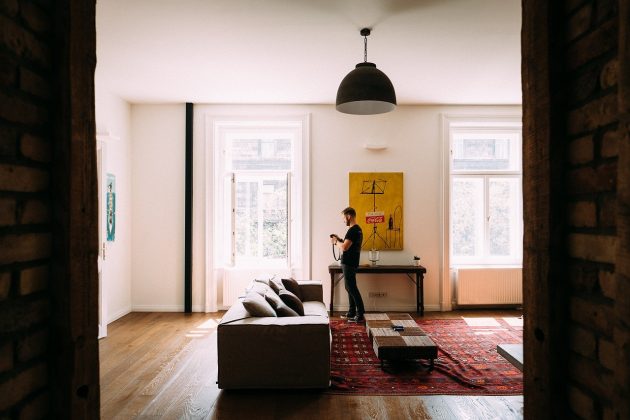Interior design is an art. It doesn’t follow a rigid set of rules to define what is good design and what isn’t. Interior designers are creatives and the most successful ones are those who are constantly experimenting with new ideas and pushing limits.
There are a number of oft-repeated stereotypes of good interior design that have taken deep root in society. As you think about giving your home a new look, you have to be aware of these myths if you want to create a space that you’ll always look forward to.

1. Matching Armchairs and Sofas
A large section of society are firm believers that furniture must be bought in a set. At the root of this myth is furniture sellers who are keen on driving sales by encouraging multi-piece purchases.
Another reason why this stereotype has persisted for so long is that it seems to work. If your furniture set blends well with the carpet, wallpaper, and drapes, your purchase will feel like a good decision. That might be true but you could be selling yourself short.
There’s something about mixing furniture designs that breathes life into a room. As long as you stick to a predetermined overall theme, there’s nothing wrong design-wise in buying an armchair and sofa from different sets.
2. Big Furniture is Good Furniture
Big sofa backs and large armrests are imposing and can dominate a room. Perhaps that’s why so many of us think this is the way to go if you want your living room to leave a lasting impression on your visitors. But big can also mean clumsy, disproportional and unbalanced. There are also logistical concerns. Do you want to be calling external help such as Six Brothers Removalists even for minor relocations due to the sheer size of your furniture?
Medium to small sizes can deliver beautiful design outcomes and without leaving your rooms feeling crowded. Furniture size should primarily be determined by the size of the room. Big pieces can work but are ideal for large spaces. Also, if you do go big, you must do so consistently. A huge sofa combined with a tiny table is unlikely to look good.
3. White Walls are Anathema
White walls in homes have been bashed for years. The argument is that white connotes sterility and creates a gloomy hospital-like ambience in a space that you expect to bubbling with life. Nothing could be further from the truth.
The trick is in ensuring that you don’t have white walls as well as white furniture and fittings. You can create a cozy and attractive environment as long as you plan out the entire setup well and give the right color, texture and position emphasis to each object.
4. Furniture Next to the Walls
This is another pretty popular stereotype. And its premise is quite logical. When you place furniture along the walls, it makes rooms look and feel more spacious. But there are two problematic assumptions with this approach. First, it assumes all rooms are small. Second, it assumes that the appearance of emptiness should be your top design priority.
In America where the majority of the population has relatively spacious homes, centering the furniture (or at least leaving space between the pieces and the walls) has a better effect. You wouldn’t want your living room to feel like an empty hall simply because there’s too much space at the center.
5. Brightly Colored Kids Rooms
It’s considered a given that children’s rooms must be brightly colored. Research has shown that kids are especially sensitive to colors. Bright colors can positively influence their behavior, inspire their imagination and stimulate brain development. Nevertheless, this generalization can be taken too far.
Colors don’t have the same type and degree of impact on all children. In addition, if the objective is to create a calm but exciting room, you are more likely to realize that by adding toys, drawings and posters.
6. Concrete is Ugly
For some people, naked concrete is a reminder of Brutalist architecture, a building style that is often associated with the monotonous ‘commie blocks’ that dominated cities of the former Soviet Union. Concrete can be beautiful though if you are open-minded and a little imaginative.
For example, you can use concrete walls for your bathroom (it’s water resistant which is certainly an advantage in this regard).
The most beautiful interior spaces are often those designed without an excessive fixation on ‘doing things by the book’. If you are going to have a home that’s attractive but not cliché, walking away from these myths is your first step to getting there.














